Lessons for HR: Where is website design heading?
When developing a new benefits website, forward-looking HR professionals would be wise to learn from leading consumer brands in order to future-proof their designs.
Consumer-facing brands are constantly improving their websites in light of changes in customer behaviour and innovations in technology. Keeping an eye on website best practice is useful for anyone overseeing design and content.
Website content for sectors from travel to luxury goods and automobiles is created to drive brand engagement, loyalty and awareness. So that when the consumer is in ‘purchase’ mode the brand is in the front of their mind.
User Experience
The best sites provide a user experience that can entertain, inform or inspire, or possibly all three. Customers visit because they have seen a promotion or advertisement signposting the website, because they want to solve a problem or want further information on the goods or services.
Top of the consumer wish list for brand sites are ease of use to find the desired information and the ability to reach that information in a few clicks. These factors ranked number one in a poll in the Econsultancy report, Digital Experience 2015: are brands meeting customer expectations?
Easy to navigate
Coca-Cola integrated all its information about its brands into one site this year to make it simple for people to locate information.
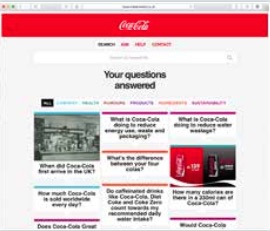
The site features an easily-found interactive Q&A section allowing readers to ask about ingredients, sugar content, products and the business alongside blogs and news.
Brands must make sure that information on, for instance, pricing and specifications are up-to-date and consistent with data presented elsewhere, otherwise customers will be swiftly dissatisfied and head for other destinations.
Checklists and Tips
Checklists and tips that help people understand and make better use of services and products can help build a reputation for being a valuable resource. The Barclays Digital Eagles initiative and its associated Digital Driving Licence site to help people learn about digital tools and how the web works has been highly praised.

Web design now leans towards uncluttered sites that provide a bold, page-dominating image to inspire and encourage exploration of the content. Examples include Harley Davidson and Knorr.
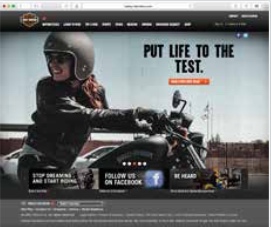
The Knorr site offers the challenging claim ‘Some say you can’t buy taste but I disagree’ and a picture of chef Marco Pierre-White alongside a recipe to capture the imagination of would-be cooks.
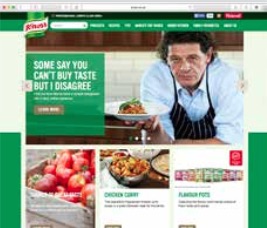
Importance of Imagery
This greater use of imagery reflects how people now like to consume information thanks to their familiarity with social media platforms such as Instagram and Pinterest. Brands are making more use of graphics or animation to deliver simple explanations of complex propositions. Organic food outlet Chipotle’s award-winning Scarecrow animation and associated game is an example of this approach.
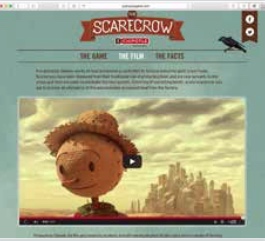
Be Interactive
The consumer demand for the kind of interactive, shareable experiences found in social media is driving sites to include games and challenges that can foster a deeper, richer connection with the brand. However, the content and interactivity has to be relevant and genuinely entertaining otherwise the result can be an embarrassingly low level of participation. To increase the shareability of such content the inclusion of social media links is essential.
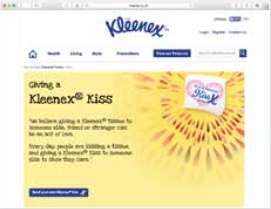
An example is an initiative from Kleenex that sets a challenge and asks visitors to ‘send a kiss’ to someone by uploading a video or picture. The initiative is extended by the ability to order a free personalised gift pack for the object of the kiss.
Power of Community
Lego provides a good case study for harnessing the power of a community. It actively solicits ideas for model kits on its Lego Ideas site and people can vote on which they would like to see become reality and available for purchase. Recent successes include a Ghostbuster’s Ectomobile.
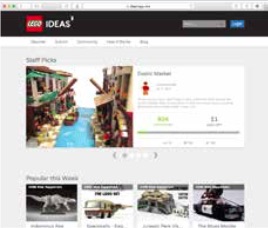
User generated content in the form of reviews and feedback is a powerful content tool and can provide the ‘social proof’ often needed to reinforce a customer’s purchase decision. Reviews are used in many sectors from finance to travel and research shows that negative reviews are fine as they help build trust. Hiscox Insurance solicits customer reviews and places them high on its website homepage.
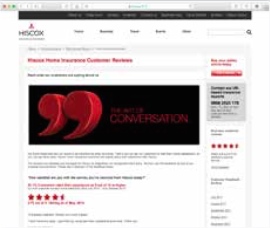
Be Consistent
While these content strategies can all build engagement with visitors it is now paramount that the website provides a seamless experience that is consistent with the customer’s experience of the brand at other touchpoints, be they offline or online. Tone of voice and factual information needs to dovetail with what is presented elsewhere, for instance in brochures or at point of sale. All the added-value functionality can be undermined if this principle is ignored.
Branwell Johnson is the former deputy editor of Marketing Week and has spent over a decade explaining complex marketing and media trends to marketers, advertising agencies and media owners.






